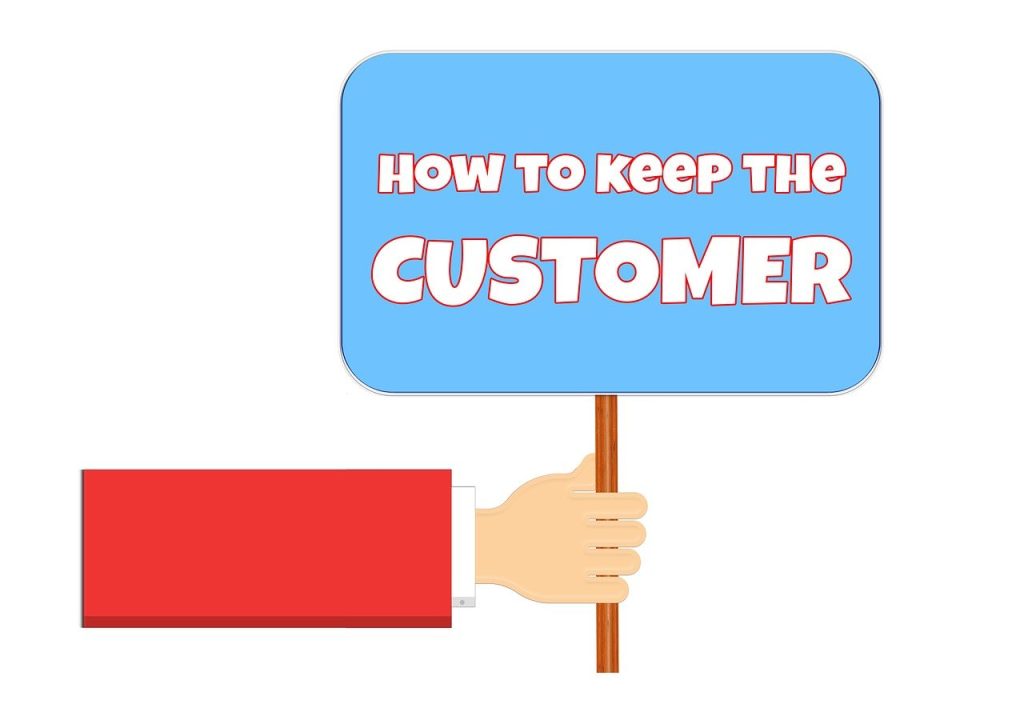Introduction
Running a successful Sharetribe marketplace isn’t just about attracting new users—it’s about keeping them engaged and active over time. In today’s competitive digital landscape, where users have countless platform options, user retention is the real engine of sustainable growth. If your users sign up but don’t return, your customer acquisition efforts and marketing spend lose their value. High churn rates can silently erode your marketplace’s momentum and make it harder to reach critical mass.
That’s why it’s essential to go beyond the basics and implement proactive churn prevention strategies. Whether you’re running a product-based marketplace, a service platform, or a niche rental community, building lasting user loyalty starts with understanding user behavior, identifying at-risk users early, and taking action before they leave.
In this blog, we’ll explore how Sharetribe marketplace founders can leverage analytics tools, personalized communication, loyalty programs, and community engagement techniques to retain users, boost repeat usage, and strengthen platform trust over time.
What is Churn Prevention?
Churn prevention refers to the strategies and actions a business takes to stop users or customers from leaving its platform or service. In the context of online marketplaces, churn happens when users—whether buyers or sellers—stop engaging, stop transacting, or permanently leave the platform. Churn prevention focuses on identifying the early signs of user disengagement and implementing targeted measures to re-engage them before they leave for good.
This might include personalized communication, special offers, improved user experiences, or timely support. The goal is to increase user lifetime value by keeping users satisfied, active, and loyal—ultimately leading to more stable and sustainable growth for the business.
Why Churn Happens in Marketplaces?
User churn is a common challenge in two-sided marketplaces—whether product-based, service-driven, or rental-focused. Understanding the underlying causes of churn is the first step toward preventing it. Below are the key reasons users abandon a marketplace, along with detailed insights into each:
When users join a marketplace, they’re looking for instant value—whether it’s finding a service, making a sale, or exploring available options. If a user signs up and doesn’t quickly see the benefit of staying, they’re far more likely to leave.
For example, a buyer might join a rental marketplace but find no listings in their area, or a seller might create a profile but receive no inquiries. Without clear incentives or early wins, users lose motivation fast. Successful marketplaces hook users early by guiding them to their first meaningful interaction within minutes or days—not weeks.
A clunky or unclear onboarding experience is one of the fastest paths to churn. If users can’t figure out how to post a listing, complete a booking, or receive payment, they’re likely to drop off before ever engaging.
Effective onboarding helps users:
-
Understand how the platform works
-
Set up their profile or listing quickly
-
Complete their first transaction
-
Feel confident and secure while navigating
A well-designed onboarding flow—enhanced with tooltips, progress checklists, and automated welcome messages—can significantly increase user activation and reduce early abandonment.

When users feel ignored or unsupported, trust erodes—and churn increases. If support queries go unanswered, or updates and changes are poorly communicated, users may assume the platform is unreliable or inactive.
Consistent communication includes:
-
Prompt customer support responses
-
Automated reminders (e.g., for unread messages or pending bookings)
-
Status updates about transactions, policies, or downtime
-
Proactive check-ins with new users
A marketplace that feels responsive and reliable builds user confidence—and that translates to longer user lifespans.
Striking the right balance of supply and demand is essential. If a marketplace is saturated (too many sellers competing for few buyers) or understocked (too few listings for active buyers), users on either side may leave out of frustration.
For example:
- Sellers may churn if they don’t receive any leads.
-
Buyers may churn if search results return poor or irrelevant matches.
Churn caused by imbalance can be reduced by category diversification, local targeting, or even by controlling onboarding volume in early stages to maintain user experience.
If users perceive the platform’s offerings as too expensive, too cheap, or lacking credibility, they’ll hesitate to engage—and often won’t return.
For example:
-
A buyer might abandon checkout if there’s no price transparency or clear refund policy.
-
A seller may leave if commission rates are high or unclear.
Trust also plays a key role—users need to believe the marketplace will protect their money, data, and experience. Lack of verified profiles, reviews, or secure transactions can drive churn fast.
Users are more likely to stay on platforms where they feel a sense of belonging, purpose, or connection. If your marketplace feels generic or transactional, users will treat it as replaceable.
Marketplaces that foster community—through user stories, reviews, social media, or brand identity—create an emotional tie that helps retain users even when competitors offer similar features. Brand loyalty is not just about functionality; it’s about how people feel when they use your platform.
What Are the Best Churn Prevention Strategies for Marketplaces?
Reducing churn isn’t just about reacting when users leave—it’s about proactively identifying friction points, delivering consistent value, and building trust at every stage of the user journey. Here are the most effective churn prevention strategies:
To prevent churn, you need visibility into how users are engaging with your platform. By using tools like Google Analytics, Mixpanel, or Sharetribe’s integrated dashboards, you can track vital user behavior metrics such as login frequency, session duration, number of listings viewed, messages sent, and abandoned transactions.
These insights help you spot early signs of disengagement—for example, users who haven’t logged in recently, or those who started but never completed a booking. By setting up thresholds or flags for inactivity, you can proactively reach out to these users before they silently churn. Analytics provides the foundation for all other retention strategies, making it a critical first step.

Once you’ve identified at-risk users or activity gaps, the next step is to engage them with personalized, behavior-driven communication. Using platforms like Customer.io, Mailchimp, or ActiveCampaign (integrated via Zapier), you can send automated messages based on specific triggers.
For instance, new users might receive a welcome email series that guides them through account setup. If someone starts creating a listing but doesn’t finish, a gentle reminder can nudge them to complete it. Similarly, if a user has been inactive for a certain period, a win-back email offering a discount or showcasing new listings can reignite interest. The right message at the right time can significantly reduce drop-off rates.
Recommended Blog: Top 12 Online Sharetribe Marketplace Trends in 2025.
First impressions matter. Many users churn because their initial experience is confusing, incomplete, or frustrating. That’s why it’s essential to provide a seamless onboarding journey that guides them from signup to their first success.
This can include a step-by-step walkthrough, a checklist of tasks to complete, tutorial videos, or in-app tooltips that help users understand what to do next. You can also automate onboarding messages that assist users at key moments, such as when they create a profile, post their first listing, or initiate a transaction.
Users who successfully complete a meaningful action early on—like making a booking or receiving an inquiry—are far more likely to become long-term users.
Users are more likely to stay if they feel recognized and rewarded. Loyalty programs can significantly improve retention by giving users a reason to return and engage repeatedly. This could include discount codes for repeat buyers, referral bonuses for inviting friends, or badges and achievements for sellers who reach key milestones.
For example, rewarding top-rated sellers with exclusive visibility or giving buyers points they can redeem for future discounts can keep them invested in your platform. These tactics build both emotional loyalty and habitual usage, which reduces the likelihood of churn.

A sense of belonging can be a powerful deterrent to churn. When users feel like they’re part of a community rather than just a marketplace, they’re more likely to stick around—even through minor friction.
You can cultivate this community by creating private groups on Facebook or Discord, sharing monthly newsletters with user stories or platform updates, and highlighting sellers or buyers in your content. Live events like webinars, Q&As, or virtual meetups can also strengthen user relationships with your brand. Community is what transforms users into loyal advocates.
No one likes to feel ignored or confused—especially when money, time, or trust is involved. Prompt and transparent support is essential for building user confidence. Make it easy for users to get help through live chat, responsive email support, or a self-serve knowledge base.
Also, be clear about your platform’s pricing, policies, and transaction processes. Ambiguity creates distrust, which often leads to churn. If users encounter a problem, how you respond—and how fast—can determine whether they stay or leave. Reliable support turns potential churn events into retention opportunities.

Not all users are the same, so why treat them that way? Segmentation allows you to group users based on behavior, demographics, or lifecycle stage, so you can create more targeted experiences and communication.
For example, new users may need more onboarding help, while power sellers may benefit from advanced tools and exclusive insights. Buyers and sellers should receive content that’s relevant to their role. Dormant users may need re-engagement campaigns, while loyal ones might appreciate early feature access.
Personalization based on segmentation makes your platform feel smart, attentive, and user-first—which encourages long-term loyalty.
Users today expect instant, smooth experiences—especially on mobile. If your marketplace is slow to load, hard to navigate on smartphones, or clunky during checkout, users are likely to drop off and never return.
Ensure that your platform is fully responsive, with fast-loading pages, intuitive mobile navigation, and simple transaction flows. You can use tools like Google PageSpeed Insights to monitor performance and identify bottlenecks. A fast, friction-free interface keeps users engaged and drastically lowers abandonment rates.

Sometimes, the best way to prevent churn is simply to ask users what’s not working. Feedback gives you real-time insights into what’s frustrating users or keeping them from completing actions.
Use exit surveys to understand why users leave, Net Promoter Score (NPS) to gauge overall satisfaction, and in-app prompts to gather feedback during their journey. You can even interview a few churned users to identify patterns. Incorporating feedback into platform improvements shows users you’re listening—and that builds long-term trust and loyalty.
Set up automated systems that detect early signs of disengagement before a user fully churns. For example:
-
Users who haven’t logged in for 14+ days
-
Listings that haven’t received views or inquiries
-
Buyers who abandon their booking or checkout
-
Sellers who post once and go inactive
By identifying these “red flags,” you can trigger timely interventions like reminders, helpful tips, or personalized offers to pull users back in. This proactive approach allows you to catch churn before it happens—rather than trying to recover users after they’ve already moved on.
How to Measure Your Churn Prevention Efforts?
Successfully reducing churn isn’t just about implementing strategies—it’s about tracking whether they’re actually working. Here are the top 5 performance indicators every marketplace operator should monitor to evaluate and improve their churn prevention efforts:
Customer Retention Rate (CRR) is one of the most critical metrics for evaluating how effective your churn prevention strategies are. It measures the percentage of users who continue to engage with your marketplace over a given period, excluding newly acquired users. A consistently high CRR indicates that your efforts in onboarding, communication, user support, and value delivery are keeping users satisfied and active.
To calculate CRR, use the formula:
CRR = ((E – N) / S) x 100,
where E is the number of users at the end of the period, N is the number of new users acquired during that time, and S is the number of users at the start.
For example, if your marketplace had 800 users at the beginning of the month, gained 200 new users, and ended the month with 900 users, your CRR would be 87.5%. This means 87.5% of your existing users stayed active—a strong indicator of a healthy platform.
Tracking CRR regularly helps you understand long-term engagement and identify patterns of user drop-off. A rising CRR over time signals that your retention strategies are working, while a decline could prompt deeper analysis into possible friction points or user dissatisfaction.

Customer Lifetime Value (CLTV) is a key metric that tells you how much revenue a single user is expected to generate over the entire duration of their relationship with your marketplace. It gives insight into the long-term profitability of your user base and helps you understand how valuable each retained customer is. When churn decreases, users tend to stay longer, engage more often, and spend more—resulting in a higher CLTV.
CLTV is typically calculated using this formula:
CLTV = Average Transaction Value × Purchase Frequency × Customer Lifespan
For example, if a customer typically spends $50 per transaction, makes 4 transactions a year, and stays active for 3 years, their CLTV would be $600. This tells you that retaining just one customer is worth $600 in long-term revenue.
A growing CLTV indicates that not only are your users sticking around, but they are also engaging more deeply with your platform—whether by booking more services, purchasing more products, or exploring premium offerings. This is a strong sign that your retention strategies are not just preventing churn but actively increasing customer value, which is crucial for long-term sustainability and profitability.
Churn Rate is the inverse of retention—it shows the percentage of users who stop engaging with your marketplace over a given period. It’s a critical metric for evaluating how well your churn prevention strategies are working. High churn suggests that users aren’t finding lasting value in your platform, while a declining churn rate signals improvement in user experience, engagement, and satisfaction.
The churn rate is typically calculated with the formula:
Churn Rate = (Users Lost During Period / Users at Start of Period) × 100
For instance, if you began the month with 1,000 users and 80 of them became inactive, your churn rate would be 8%. This number gives you a clear indication of how many users are leaving and helps you assess the impact of any new initiatives—such as onboarding improvements, personalized follow-ups, or loyalty programs.
When you see a decrease in churn after implementing strategies like automated welcome flows, referral incentives, or targeted re-engagement campaigns, it validates that those efforts are effectively reducing drop-offs. It’s especially important to track churn among your most valuable segments—like frequent buyers or top sellers—as retaining them has the biggest impact on your marketplace’s health and growth.
Product Engagement Score is a composite metric that reflects how actively users interact with your marketplace. It goes beyond surface-level data to give insight into user behavior and the real value they derive from your platform. Common indicators used to calculate this score include login frequency, listings created, messages exchanged, wishlists saved, and transactions completed.
A consistently high product engagement score means users aren’t just visiting—they’re participating. This is a strong signal that your marketplace is providing tangible value, whether through a smooth booking process, a rich selection of listings, or meaningful user interactions. It’s also a reliable predictor of retention: highly engaged users are far less likely to churn.
To make the metric more actionable, segment it by user roles—such as buyers vs. sellers.
For instance, if sellers have a low engagement score, it may indicate that they’re not receiving inquiries or struggling with visibility. That insight can help you optimize listing promotion or tweak your communication flow to better support their goals. On the buyer side, low engagement might reveal the need for better search filters, more relevant listings, or improved trust signals like reviews and ratings. Tracking this score over time helps fine-tune your churn prevention efforts and deepen platform stickiness.

Net Promoter Score (NPS) is a vital metric that gauges overall user satisfaction and loyalty by asking a simple yet powerful question: “How likely are you to recommend this platform to a friend or colleague?” Based on the responses, users are categorized as Promoters (scores of 9–10), Passives (7–8), or Detractors (0–6). Your NPS is calculated by subtracting the percentage of Detractors from the percentage of Promoters, resulting in a score between -100 and +100.
A higher NPS indicates stronger user sentiment and lower likelihood of churn. Promoters are not only more likely to stay—they often become brand advocates, driving referrals and organic growth. On the other hand, Detractors are at high risk of churn and may even discourage others from using your marketplace.
Regularly collecting and analyzing NPS helps you detect shifts in user perception early.
For instance, a drop in NPS might signal a recent change (like a feature rollout or pricing update) that didn’t sit well with users. This gives you a chance to intervene—by following up with detractors, gathering qualitative feedback, and addressing common pain points.
Conclusion
Preventing churn in your Sharetribe marketplace is not a one-time fix but an ongoing process that requires data-driven insights, user-centric strategies, and consistent engagement. By monitoring key metrics like retention rate, churn rate, lifetime value, and product engagement, you gain a clear picture of what’s working—and what’s not.
Coupled with personalized communication, strong onboarding, and community-building efforts, these insights empower you to make informed decisions that keep users active and loyal.
Ultimately, a marketplace that listens to its users, continuously improves the experience, and builds meaningful relationships will not only reduce churn but also drive sustainable long-term growth.
FAQ's
1. What is Churn, and why does it matter for my marketplace?
Churn refers to the percentage of users who stop using your marketplace over a given period. It matters because high churn means lost revenue, reduced growth potential, and poor user satisfaction. Retaining users is often more cost-effective than acquiring new ones.
2. How can I identify users who are about to churn?
Look for signs like inactivity, unfinished listings, abandoned bookings, or reduced messaging. Tools like Google Analytics or Mixpanel can help track these behaviors. Setting up alerts for such patterns enables proactive outreach before users leave for good.
3. What are the most effective ways to retain users on Sharetribe?
Effective retention strategies include onboarding guidance, automated follow-ups, loyalty incentives, prompt customer support, and building a user community. Sharetribe’s customizable messaging and automation workflows are useful tools for implementing these strategies.
4. Should I focus more on buyer retention or seller retention?
Both are critical, but it depends on your marketplace model. For service platforms, retaining high-quality providers ensures consistent value. For product or rental marketplaces, repeat buyers drive revenue. A balanced approach with tailored strategies for each side is ideal.
5. How do I measure the success of my churn prevention strategies?
Track key metrics such as Customer Retention Rate, Churn Rate, Customer Lifetime Value (CLTV), Product Engagement Score, and Net Promoter Score (NPS). Improvements in these areas indicate your efforts are positively impacting user loyalty.
6. Can automation really help reduce churn?
Absolutely. Automated emails, reminders, onboarding flows, and re-engagement campaigns allow you to scale personalized user interactions. Platforms like Mailchimp, Customer.io, or Zapier (integrated with Sharetribe) make it easy to keep users engaged without manual effort.
7. What role does user feedback play in retention?
User feedback is crucial. It helps you understand why users are leaving, what they’re struggling with, and what features they value most. Regularly collecting and acting on feedback builds trust and shows users you’re committed to improving their experience.








